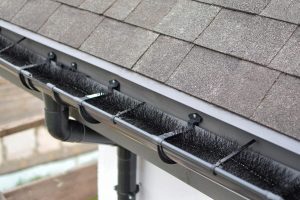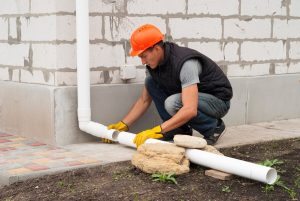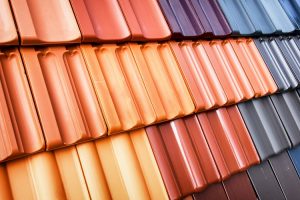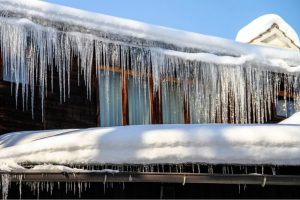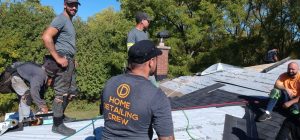Green Roofs in Toronto – Advantages and Disadvantages of Green Roofs
Sep 1, 2023
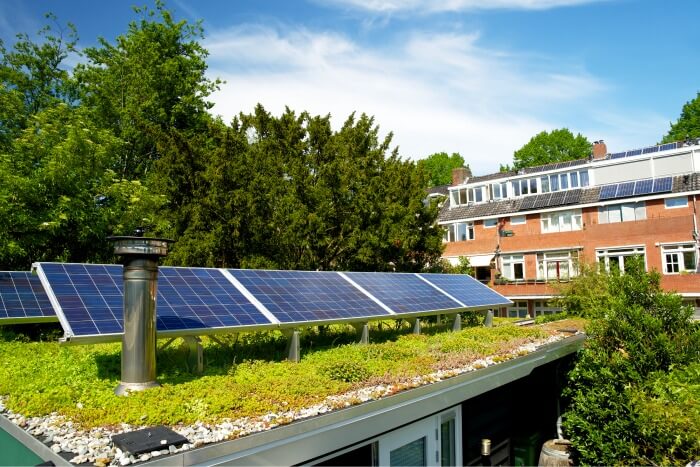
Before looking into what are the disadvantages of green roofs, we must understand what they are and how they work. Such roofs are usually installed on top of other roofing materials and are available in various types. Some of the requirements for having green roofs include having very efficient drainage systems, waterproofing for the roof, a root repellent medium, and filter cloth. Without these, it will be impossible to experience green roofs benefits.
Despite their growing trend, some cities do not allow green roofs. So, are green roofs allowed in Ontario? The answer is yes, but you may need drainage layers, and the plants may have to be in portable containers, so they are placed on the roof in an interlocking grid. Loosely placing them is also an alternative.
Why are green roofs good? That is another common question among most people considering installing them on their properties. Various studies have been done on the topic, and they found that green roofs are environmentally friendly. That is because of their ability to retain water when it rains, then release it back through evapotranspiration. Without the vegetation on the roof, rainwater would fall freely, causing pollutants to reach stormwater systems that are not regulated. The eco-friendly green roof advantages can be experienced in any location or landscape. Other benefits of these roofing types include improved temperature regulation for better energy savings and enhanced water management. The roof design, the quality of insulation, the thickness of vegetation, and weather conditions will determine the amount of energy saved.
So, do green roofs really work? Yes. Research shows that they are more effective than other alternative strategies like planting trees on the streets. It is also a more viable option because it does not require roofing repair, and most important large pieces of land, which may not be easy to find in urban settings. However, you must consider the possible disadvantages of green roofing before installing one.
What Are The Different Types of Green Roofs?
All types of green roofs function the same way and provide similar benefits. Their main merit is their ability to reduce surface Urban Heat Island effects, ensuring suburban developments in the regions do not trap heat. They also provide other advantages such as minimizing water runoff and cooling the buildings they are installed on by providing natural insulation. In addition, they improve air quality in those buildings and tend to last longer than the traditional roofing options. These are some of the reasons why the green roof styles are becoming popular in most parts of Europe, with business owners and homeowners seeing them as a better way of promoting environmentalism.
The 2 main types of green roof systems are extensive and intensive green roofs. Intensive green roofs are comparable to uplifted parks because they have the capacity to sustain walkways, trees, shrubs, and benches. However, setting them up is a more complex process that requires a more comprehensive drainage system, a root support system for the plants, a structural support system for the building, and an enhanced irrigation method. The plant growing surface also has to be deeper to support the heavier greenery.
In comparison, the extensive green roof system is less complicated and usually supports between 7 kg and 23 kg per sq. ft. They mainly consist of ground covers and do not require a lot of maintenance or support. In most cases, they only function as mediums that can help improve the environment rather than those that serve as gardens.
Combining both roof types is possible, but the installation is an intensive process. It has to be professionally designed, with the structural analysis of the building being a priority. Multiple layered systems will be needed, which increases the cost significantly. Some cities offer incentives to discount the high initial charges of installing the different types of roofs, which increases the long-term benefits even more. For instance, both intensive and extensive green roofs can protect the building from UV radiation and other harsh weather elements, which makes them worth having. Their overall benefits also outweigh the high installation costs, even when compared to other roofing materials.
So, how do green roofs work? The vegetation provided by both types of green roofs serves as a sponge, which filters water as it absorbs it, making sure pollutants do not reach the gutters or sewer systems. The plants also produce oxygen and shade, which increases the thermal mass and cools the building. The vegetation can also remove particulates from the air, and irrigation saves energy by reducing the amount of energy needed to cool the building.
Extensive Green Roof System
The lightweight nature of extensive green roofs makes them a preferable choice for many homeowners. They consist of ground covering vegetation that is easier to maintain. Most extensive green roofing systems are made with succulent plants, dessert grass, small flowers, or sedum that do not require irrigation, except in drought seasons. Most people choose sedum because they are hardy and require minimal maintenance, but they may need an extra growing surface. You will never have to intervene regularly after planting. They are cheaper than intensive green roofs and can be installed on new and existing roofs alike.
Extensive green roof systems are ideal on low-sloped roofs and those with a steepness of up to 30 degrees, making them great for domestic properties. However, higher-pitched roofs will require additional support for the vegetation when it starts to grow and may not have the capacity to hold enough water. As a result, weeding may be done once every year, and watering may only be necessary during the first year of planting.

Intensive Green Roofs
Intensive green roofs are sometimes known as roof gardens because they can support larger plants like small trees and bushes. As such, they need a bigger growing medium of at least 8 inches to sustain the thicker vegetation. Because of their size, they require more maintenance and will cost more to install. They also need enhanced support mediums to improve safety when the trees start to become bigger. The vegetation and plants require regular irrigation, but they can still provide green roof benefits such as water retention, energy efficiency, improved air quality, and reduced temperatures.
Different types of roofs with pictures show that the intensive green roofs can also have lighting, railings, and walkways, with complete landscaping to increase their aesthetic appeal. They can be made into vegetable gardens or playgrounds.
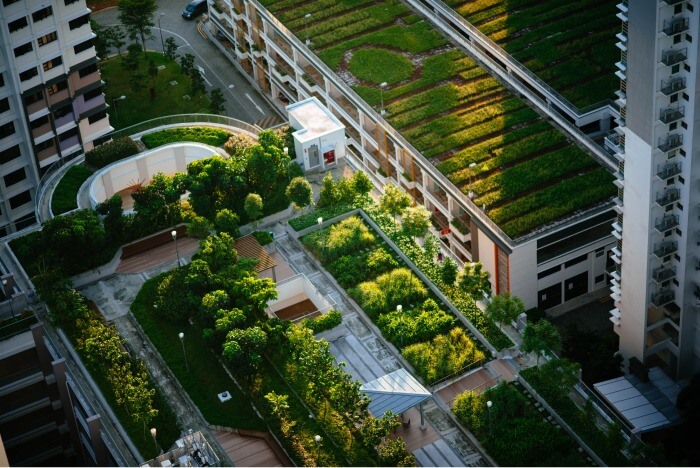
Semi-Intensive Green Roof System
The semi-intensive green roof system is a hybrid between the intensive and extensive roof systems, usually chosen to maximize the advantages of both types. The semi-intensive system provides room for more diversity by allowing property owners to choose from more plant options without increasing installation or maintenance costs. It requires a deeper growing substrate, but it cannot support the growth of shrubs and trees.

What are the benefits of a green roof?
Green roof benefits to the environment are the same as those of conventional vegetation. The many merits are more beneficial in densely populated cities with limited land to plant more trees or grow regular plants. Some of those advantages include:
Green Roofs Reduce Energy Consumption
The shelter that green roofs give buildings influences heating and cooling, saving the energy used to achieve both. For instance, the vegetation can absorb heat from the property and significantly reduce the quantity of power used for cooling. Additionally, the insulation that the roofs provide to the internal units reduces heat transmission to the atmosphere. These benefits are more enhanced during harsh seasons. You will require less energy to heat the building during winter. In summer, the green roof will prevent heat absorption into the building; therefore, less energy is needed to cool the interior. Despite their effectiveness, green roofs should not be used as replacements for traditional insulation systems. Comparison between traditional and green roofs show that they have varying energy demands. Typically, conventional roofing materials will use between 6 and 8 KWh of energy for cooling.
On the other hand, a green roof will use up to 1.5 KWh less energy to get the same cooling effect. That shows that a green roof can reduce energy consumption by up to 75% during summer. However, the level of effectiveness will depend on several factors, such as the climatic conditions in your area and the size of the building. The energy-saving may seem insignificant, but it can save you a lot of money in the long run.
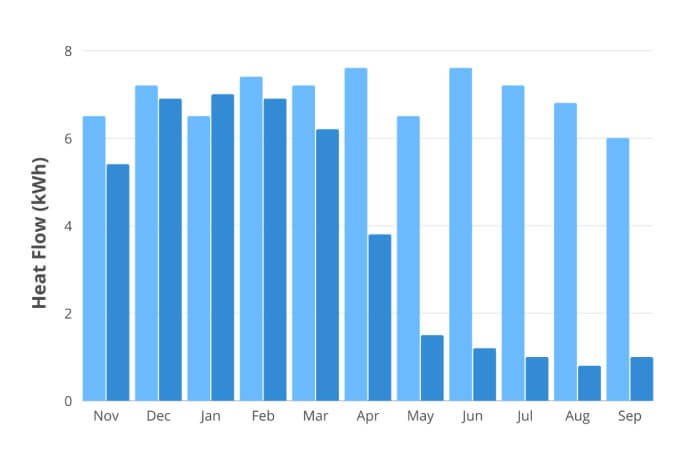
Green Roofs Can Reduce Air Pollution
Green roofs can reduce air pollution in several ways, one of which is the reduction of carbon monoxide. The plants also reduce other gases like nitrogen oxides and sulphur dioxide from the atmosphere. Some studies have found that 93 square meters of a green roof can clear up to 40 pounds of particulate matter in a span of 12 months. The same amount of particulate matter is estimated to be equivalent to the amount of particulate matter emitted by 15 cars in a year. Based on those findings, researchers believe that a larger scale of green roofs can produce better results. For instance, planting trees to cover up to 20% of a 930 sq. meter roof can reduce up to 6 tons of particulate matter. This scale of green roof installation is equivalent to up to 30,000 trees reducing pollution. So if cities install green roofs in only 20% of roofs in the cities and plant trees on them, those roofs can produce better results than having grass only.
Green roofs also reduce air pollution by reducing energy consumption in buildings that have them. That leads to lower carbon emissions into the environment. According to the National Research Council of Canada, green roofs can reduce the energy demand by more than 75%, especially in summer. Green roofs can also reduce heat loss in winter by the same magnitude. Additionally, the greenery prevents ozone formation at lower levels, which is possible because the trees reduce temperatures within and around the buildings. The demands on power plants also decrease with the decrease in temperature and pollutants that reach the environment.
With Green Roofs, You Can Expect an Increase in Comfort Level
Temperature regulation provided by green roofs creates a more comfortable environment for those living in the cities. Although using green roofs as replacements for insulation is not recommended, experts support the installation of these roofs on buildings that do not have air conditioning systems because they can maintain their effectiveness through the changing seasons, especially winter and summer.
Having vegetation and trees similar to what you would have on the ground placed on the roof also improves the overall quality of life for those using the buildings. The building occupants get a serene place with a conducive atmosphere to relax, even on a commercial building. In other cases, green roofs can serve as a habitat for endangered tree species. The roofs are elevated hence providing protection for endangered species away from people who may jeopardize their growth.
Green Roofs Enhance Quality and Management of Water
Rain or stormwater can overwhelm sewer systems in cities if there’s no proper management. With green roofs, that water is absorbed, reducing the volume of runoff water. The water may also carry pollutants that could reach sewer or gutter systems if the roof does not have vegetation. Green roofs help check the speed of any runoffs and purify stormwater by absorbing some pollutants. The level of purification and absorption will depend on the slope and the thickness of the green roof. Therefore, most architects generally recommend prioritizing the ability of the roof to cater to such functionalities during installation.
According to some studies, green roofs can absorb at least 50% of the rainwater. In some cases, the absorption rate reaches 100%, depending on the thickness and design. The thicker the vegetation, the more it is likely to absorb. That is why intensive green roofs are better at absorption than extensive roofs. Research proved that 10 cm thick vegetation could reduce runoff effectively by 75% in a period of one year and three months. Such vegetation can be helpful with heavy downpours or when rainfall peaks.
The water absorbed by green roofs is released back into the atmosphere through evapotranspiration, thereby increasing the ability of the vegetation to drain more water when it rains again. That is also the reason why such roofs improve their absorption capacity the longer they remain in place. As such, property owners may not have to invest in expensive water management fixtures or systems.
It is important to remember that apart from the slope and design of the green roof, the local climatic conditions also influence its ability to retain water. Some researchers have discovered that some green roofs can retain up to 95% runoff during peak rainfall in some areas. Some of them are also designed to release retained water into the water management systems after the rain stops.
The ability of green roofs to act as filters for pollutants is another main advantage. They purify the water that reaches the systems you have in place. One of the studies discovered that green roofs could eliminate up to 95% of copper, cadmium, and lead. In addition, the study that used a monitoring program found that those roofs can achieve a purification rate ranging between 80% and 95% when removing toxic agents like polycyclic aromatic hydrocarbons and other particles present in stormwater.
However, green roofs can also increase the quantities of nitrogen and phosphorous because of the compost present in the soil. Even so, the ability of green roofs to reduce pollutants still surpasses that of conventional roofs. They also decrease the pH levels of the rainwater better than traditional roofs.
The Presence of a Green Roof Increases Roofing Membrane Durability
Roofing membranes are essential, but temperature fluctuations can damage them. The more that happens, the higher the chances of the membranes tearing and wearing off quickly. Green roofs prevent this from happening by reducing exposure to those fluctuations and preventing ultraviolet rays from reaching waterproofing membranes.
Green Roofs Reduce Noise
The vegetation on green roofs makes them perfect for noise attenuation. That performance is more enhanced with low-frequency noise. With proper design and installation, extensive green roofs can reduce noise levels by up to 40 decibels. Intensive roofs can provide better results, reducing between 46 to 50 noise decibels. Their thickness and ability to withhold more plant variations make them better at noise reduction.
Green Roofs Will Increase a Building’s Marketability
As the desire for more environment-friendly solutions increase, properties with green roofs continue to be in demand. Most environmentalists and those who support the green building movement target such roofs when looking for properties on sale. The benefits they provide are usually the best marketing point, with the movement also facilitating leases, sales, and employee recruitments. Buildings with green roofs also experience lower tenant or employee turnover. They also have better efficiency that increases property value and creates more demand. Marketability also stems from the fact that investors will not have to spend a lot of money installing the green roof after purchasing existing ones.
With Green Roofs You Can Expect an Increase in Biodiversity
The various plants and trees grown on green roofs can provide a habitat for multiple birds and other animal species. In most cases, they are shelters to migrating birds that may use them as a stepping stone before getting to their destination. That makes it possible for various species to link up.
Biodiversity creates benefits in various realms. One of them is the ecosystem. Diverse ecosystems can increase productivity levels when there are environmental variations, better than ecosystems with fewer species. The advantages are also experienced in the economic sector when biodiversity causes the stabilization in the delivery of ecological goods and services such as medicinal plants, food, clean air, and water.
The diversity visually and environmentally can also positively impact the psychological well-being and community.
How Are Green Roofs Installed?
The purpose for the roof and the available resources often determine the installation of green roofs. The first step is choosing the desired type between the intensive and extensive roof systems. In most cases, the extensive roof option is ideal when there is minimal budget, and the property owner still wants to improve energy savings without dealing with too many maintenance demands. Similarly, buildings in cities that lack recreational parks can opt for the intensive green roofing option.
Some green roofs can also be made semi-extensive or semi-intensive depending on the preference of the building owner, the available green roof materials, and the structural integrity of the properties. If not considered carefully, the site of installation can hinder the success of the green roof development – the vegetation and trees will not thrive in some conditions. Other crucial factors like fire safety should also be carefully considered. Consultation with a structural engineer before green roof construction is essential.
Selecting Site For Installation Of Green Roofs
One and the only way to enjoy all the benefits of green roofs is by choosing the best site for installation. Most developers opt to install these roofs in old city sections that do not have enough space for the traditional growth of trees or vegetation. Fast developing areas are also ideal sites. Having plants and shrubs on rooftops is the only option left to promote environmentalism in such parts of the city. Such installations also provide the right ambiance for recreation by creating a serene environment.
Some of the developers are also targeting areas with high energy consumption rates. Bigger buildings, likely to use more power in heating and cooling, are ideal for such green roofs. The proven ability of green roofs to regulate temperatures and reduce power use makes them perfect for such sites. Commercial properties and factories can also benefit from the energy savings of green roofs the same way domestic buildings do.
High rainfall areas can also benefit from green roofs installations because the vegetation and trees can prevent runoffs. That keeps the stormwater from causing damage to any landscaping feature below or overwhelming the water management systems put in place. Green roof installations are best done on flat roofs or those with low slopes. They are less challenging structurally and will not present a lot of construction-related challenges. Green roofs on high pitched roofs require extra structural support, which may be expensive and more labour intensive.
Most developers also prefer to have green solutions in new constructions rather than older buildings. It is more challenging to incorporate the green roof designs into older buildings than new ones whose designs can be modified as the building process continues. However, they can be adjusted to make them suitable for those green roofs. That does not mean the green roofs cannot work on old properties. Retrofitting support systems are usually enough to give the buildings the structural strength to manage the additional weight of green roofs. The civil engineering industry has also had some advancements that allow green roofs development on existing roofs regardless of how large they are. For instance, stone ballast can be modified to accommodate some greenery or a layer of vegetation.
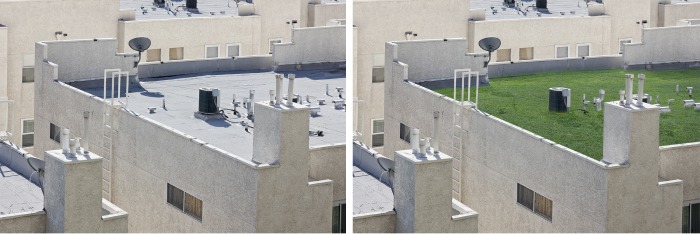
How To Install and Take Care of Green Roofs
All types of green roofs require the same components for proper installation and maintenance.
We’ve highlighted them below. They are:
Growing medium
The growing medium used on roofs is never the same as that used on the ground. The conventional soil is usually heavier and tighter because of regular exposure to rainfall which compacts it further. As a result, its ability to retain water or provide aeration for the roots is lower. On the contrary, green roof soil is lighter because of the reduced presence of organic matter. In addition, it contains mineral aggregates that make its composition more special for plantations. Therefore, alteration is possible to make it more suitable for better water retention without adding to its weight and overwhelming the building.

Typically, the longevity of the growing medium should be the same as that of the existing roof. This is because only 20% of the growing medium is comprised of organic matter, and the remaining 80% is composed of inorganic matter. There is no standard thickness – it depends on whether the roof is intensive, which could be over 20 cm thick, or extensive, which can be 15 cm. Consistency of the drainage and aeration are paramount, just like resistance to compression and decompression. The physical and chemical stability of the medium is also essential.
Vegetation
Some of the factors that determine the type of vegetation to be grown on green roofs are the climatic conditions, the architectural design of the building, water accessibility, and the purpose of the green roof. The type of green roof chosen, whether intensive or extensive, also determines the vegetation. The plants grown do not always require a lot of maintenance to be deep-rooted in the soil. They also need fewer minerals to thrive and have a high tolerance for harsh weather elements. In addition, they can withstand strong winds. Some types of plants, like sedum, have high moisture content and are resistant to desert conditions and fire.
If you prefer vegetation such as designer trees, bushes, or shrubs, the intensive green roof type can provide deep soil to anchor their roots. Bigger plants and buildings that have better irrigation systems can also use intensive roof systems.
The vegetation and plants for green roofs are also available in various sizes, textures, and colours. Again, you can pick according to your budget or preference.
Filter membrane
A filter membrane is essential for releasing excess water from the soil while still preventing finer particles from being lost through erosion when it rains. The filter membrane typically works with a drainage system to ensure the roof does not get overwhelmed with pooling water during a storm or when it rains. The drainage must not cause too much dryness to damage the vegetation. Instead, it should leave enough moisture to rejuvenate and promote the healthy growth of the plants.
Root repellent
The root repellent or barrier is placed at the bottom layer. It keeps the roots from growing excessively and reaching or penetrating through the concrete or roofing material. It prevents leaks or other damages that could be too expensive to repair, especially on the waterproofing membrane.
Waterproof membrane and cover
The waterproofing layer keeps excess moisture from seeping through the roof and causing damage. The materials used are generally strong and durable such as hard ply. Some green roofs are built to resist water and penetration naturally. They may not need the extra membrane. However, there has to be a cover layer to protect and separate the waterproof layer from the rest of the roof. A board can also provide extra support.
Thermal insulator
The thermal insulation medium can either be placed on top of the growing medium or inside. The growing medium can provide insulation, but it is not enough to sustain the whole building. Another insulation layer must be installed.
Please note that the insulation capacity of the soil increases with time. The more it is exposed to rainwater or moisture, the more its insulation capability improves. The traditional insulation material only enhances what the growing medium does.
Vapour barrier
The vapour barrier is placed at the bottom part of the green roof to prevent moisture penetration.
Structural support
The heavy nature of green roofs means they need extra structural support to prevent damage to the buildings. For instance, an extensive green roof can be up to 30 pounds per sq. ft. without the extra weight added by water when it rains or after a storm. The construction engineers should consider other elements such as snow and heavy rainfall to ensure the buildings meet the local codes and safety standards required in such places. The additional support needed is why most developers prefer to add green roofs to new constructions rather than existing buildings.
In most cases, intensive green roofs require more structural support than extensive roofs. In order for them to retain more water and support trees or larger plants, intensive green roofs need more soil. That alone ends up exerting more weight on the property structure. Extensive roofs that are used as ideal recreational spots for city residents require more maintenance than those that are not.
Installation of green roofs can be done in a single large section or smaller planting beds which are joined later. The modular planting method uses metal or plastic trays, which are movable for maintenance purposes. Installation can also be incremental, and the layers beneath should allow for regular inspections. The plants used on the green roofs can be produced in a greenhouse. Those that do not thrive after being relocated to the roof can be replaced easily. However, unlike single-unit green roofs, modular roofs do not promote the flow of air or moisture between the plants, which may influence their wetness and dryness.
Taking care of the green roof soon after planting through weeding and pest control is essential in helping the plants grow fast. Monthly weeding for the first few years is recommended. Fertilizers should be minimized to once annually. There should be regular irrigation, even on extensive green roofs in dry regions, and replantation may be necessary if the required density is not achieved at first.
How Safe Are Green Roofs?
Regarding the safety of green roofs, one of the most vital questions is, are green roofs a fire hazard? The answer is yes, but only if the vegetation is left to dry up. Interference with its structural integrity is also a potential problem with these roofs. However, with proper irrigation and maintenance, the moisture content they retain can prevent the spreading of fire.
Property owners or developers can also implement some measures to protect them against fires. One of them is using fire-resistant plants like sedum. Installation of fire breaks at 2 feet intervals can also be effective in stopping the spread of fire. Additionally, ensuring the growing medium remains sufficiently moist and avoiding plants that can dry up in summer are also effective protective measures.
Average Cost of Green Roofs
The type of vegetation, choice of growing medium, side fencing, type of green roof, and drainage system are some of the elements that influence the cost of green roof installation. Labour charges also differ depending on the professional hired to do the job. For instance, regions with many green roofs are likely to have more skilled and experienced workers. That could lower the installation price. The cost will be higher in areas with fewer experts. Despite all these, the average charges range between $10 and $30 per square foot. However, the prices can go up to $50 per sq. ft. or more in some areas.
Do green roofs pay for themselves? They do eventually. The energy conservation and the value they add to the property means the amount they help you save can be more than the installation cost in a few years.
What Science Says About Green Roofs
Do green roofs really work? Researchers are exploring the green roof industry to find ways of improving the installation processes. They do numerical and experimental studies to determine the roofing type response and determine the performance levels. The researchers are also trying to find ways to reduce the cost of those studies in the process.
How Green Roofs Perform in Different Countries
When it comes to how green roofs work, their performance in various countries must be considered. Research institutions have started setting up facilities that can quantify the extent of thermal performance and the efficiency of green roofs in different locations. European countries like Germany, France, and Switzerland are already advancing in the green roof movement, with the other countries catching up slowly.
The numerous benefits of such roofs are becoming more popular. As a result, many governments are encouraging their citizens to install green roofs on residential and commercial buildings. Some researchers have also started exploring the possibility of improving the efficiency and thermal performance of these roofs as their installation across different countries increase. In addition, they are assessing how these roofs are sensitive to changes in climatic conditions.
Experimental Green Roofs Show Amazing Results
The first image below shows one of the experiments done on a low-sloped building with a high roof to wall ratio. It has two areas of consideration. The first is the left section, which has a green roof, and the second is the right section, which has an extension of the green roof with a bituminous membrane. The grey-coloured membrane is similar to the darker conventional roof in terms of heat reflection. The green roof used has been made with the same components and can support vegetation growth, with extra structural support also available.

The second image shows the internal structure of the right and left sides of the green roof used for the experiment. One is the green roof, and the other is the reference roof. The latter has several layers: vapour barrier, supporting cover, thermal insulator, structural support layer, and waterproof layer. The green roof also has all the elements found in the reference layer, with additional components like filter membrane, growing medium, and drainage system also being present.
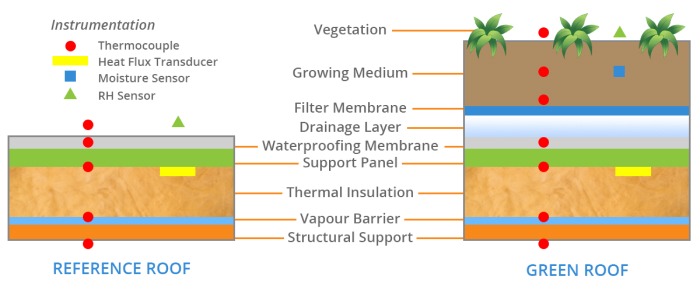
The researchers gather information using instruments that they put in both sections of the building to capture the main parameters for evaluating the efficiency and performance. Some of the components they pay most attention to are the moisture content, water runoff, heat flow, the reflection capacity of the roof, thermal distribution or profile across the roof, and the microclimate on top of the vegetation.
The researchers used a wildflower meadow for the experiment in the first year, then changed to Kentucky bluegrass in the following year. They also measured the appropriate parameters for the roof first. That was in addition to the climatic parameters that were recorded with the help of a metrological station. The daily temperature, rainfall, solar radiation within a sixty-meter radius, and relative humidity were measured. Below is a summary of the results within two years.
How Green Roofs Affect Roofing Temperature
Solar radiation experienced during the day increases the temperature of the roof, especially the exposed areas. The amount of temperature increase depends on the colour of the membrane, which determines the amount of solar radiation absorption. That means membranes with lighter colours are colder than those with darker colours. As such, the green roof turned out to be cooler than the side with a bituminous membrane, which experienced a higher temperature increase. Both sides were measured on a summer day, and the parameters were noted down. The reference roof recorded a temperature of 70 degrees Celsius, whereas the green roof side reached a maximum temperature of 25 degrees Celsius, clearly indicating one of the green roofs benefits.
Analysis of the data collected showed that the reference roof temperature exceeded 50 degrees Celsius 33% of the time, equivalent to 219 days out of the 660 days it took to conduct the study. It was more than 60 degrees Celsius 13% of the time, which translates to 89 days. The room temperature was more than 30°C on the reference roof side 10% of the time and only 3% of the duration on the green roof side of the building.
The researchers also discovered that exposure to solar radiation reduces the longevity of the bituminous membrane. That means reduced performance with time as the chemical properties change and reduce its mechanical performance capacity. Further research is still required. However, the preliminary findings indicate that green vegetation can reduce the exposure of the reference membranes by preventing solar radiation from seeping through to reach them. The results also show that green roof construction has better temperature control and can reduce the energy used for cooling.
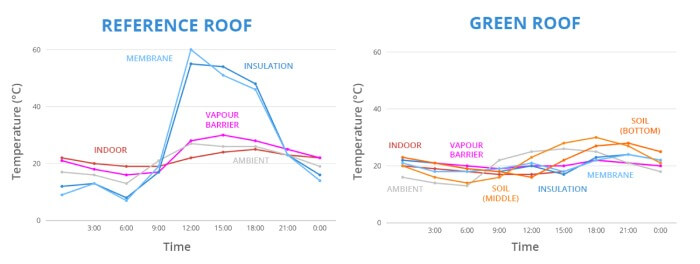
How Efficient Are Green Roofs?
How do green roofs work to bring the required efficiency? Through the experiment, researchers found that green roofs can maintain cooler temperatures in summer. The soil and vegetation on them also serve as a protective layer to keep the roof membranes from exposure to ultraviolet rays that could destroy them. Additionally, the evapotranspiration from the plants also helps lower the temperature for the growing medium as well.
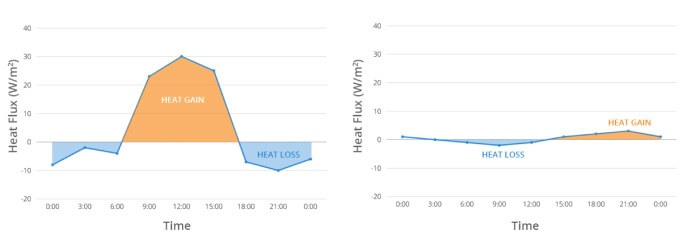
With conventional roofs, it is easier for heat to seep through and create the need for cooling. The experiment mentioned above also measured the heat flow into the building during summer. They used transducers that were placed on various sections of the roof to measure the heat fluctuations. The graph below shows those findings. The positive values represent the heat reaching the building, and the negative values show heat loss. As indicated, the reference roof had more positive values during the day and negative figures at night, showing it absorbed more heat and later released it at night. The green roof had better regulation of heat flow in and out of the building. During winter, the experiment showed that green roofs also protected the building from snow. Their vegetation acted as an insulation layer. Because of that, the building needed less energy for heating.
Another observation from the experiment showed that the efficiency of green roofs was better than that of reference roofs. This is because the latter only had a single insulation layer. The second figure below shows the average amount of energy consumed on both the green and reference roofs. The difference in the level of performance was most significant at the onset of winter and fall. However, it became comparable in the peak of winter on both sides of the building.
Green roof systems also proved to be better during summer. Their performance exceeded the one on reference roofs significantly. The membrane used with the bitumen absorbs too much heat during the day and releases that heat at night. As a result, the building is too cold and needs more energy to create a comfortable temperature. With the vegetation on the green roof, the building gets another insulation layer, which reduces the rate of heat absorption and its release. The building ends up needing less energy to maintain the optimal temperature. As shown in the diagram below, the fuel used for air conditioning in a reference roof was between 6 to 7.5 kWh per day, while the green roof did not exceed 1.5 kWh per day. That proves that green roofs can save up to 75% of energy in any building if they are installed.
Through the experiment, researchers also discovered that the heat loss in spring and summer was higher than in winter when heat loss reduced remarkably. In summer, the trees and vegetation on a green roof protect the roof from radiation by giving it shade and insulation. At the same time, those same features enhance cooling through evapotranspiration. Those attributes give the green roof two crucial ways of reducing the intensity of heat that reaches inside the building in summer. The way they function in summer differs from their performance in winter, but you still get lower energy consumption in both seasons. The green roofs were found to have the capacity to block up to 95% of incoming heat and 26% of outgoing heat. The reference roofs could prevent an average of 47% of heat flow. That proved the green roofs are more superior.

Green Roofs Can Reduce Urban Heat Island (UHI)
Urban Heat Island or UHI is a condition that happens when the natural land covers or vegetation are removed for the construction of urban amenities like pavements, buildings, or any other non-porous structure. The greenery usually promotes the release of moisture into the surrounding through a process called evapotranspiration. The leaves of trees and plants planted on green roofs release the water as vapour through their leaves, preventing too much dryness in the atmosphere. That vapour stores solar energy as it rises and releases it into the upper atmosphere when condensation happens. By replacing the natural vegetation with concrete or hard materials, evapotranspiration does not occur, meaning the solar heat is not used and is absorbed by the available infrastructure instead. Those surfaces will release that heat back into the atmosphere and cause the Urban Heat Island effect. The hard surfaces cannot absorb water either, which means they do not use solar energy even after it is released back into the surrounding. It will keep accumulating until it causes discomfort, raising the amount of energy consumed in air conditioning.
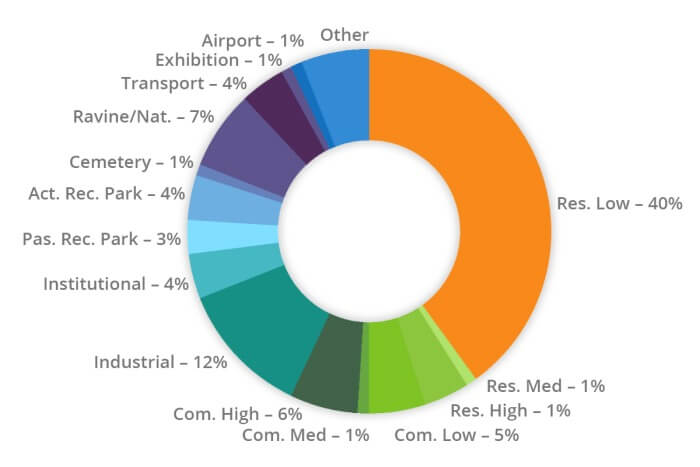
Every city and specific section has a different surface temperature representation, which determines the UHI there. Various materials also have different temperatures, according to the outcome of a study by some researchers. Below is a figure that shows the differences in surface temperature on a wooden shelter, road, forest, and transect. It indicates that the surfaces that lack vegetation tend to get higher temperatures than those covered with plants and or trees. Smooth surfaces and roads showed a temperature range between 45 to 60 degrees Celsius, while forests and areas with vegetation had a surface temperature of 30 degrees Celsius. That proves that developing green roofs is an effective way of reducing surface temperatures. By extension, it also reduces urban heat islands.
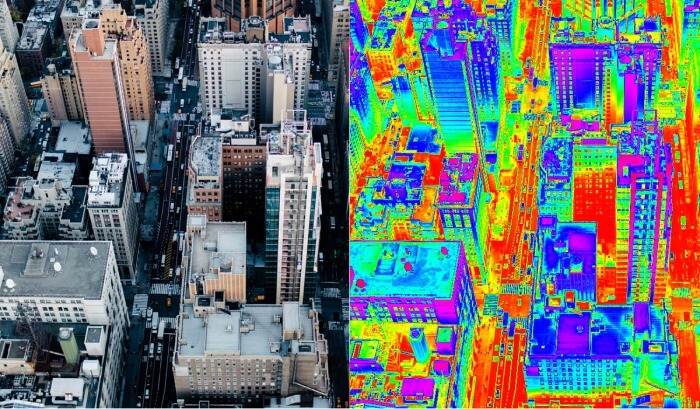
UHI exists on the urban boundary layer, which is the range from the rooftops in city buildings to a section in the atmosphere where the effects of the urban heat become neutralized (zero). From the results of that study, the boundary layer temperature affects the canopy layer. UHI also affects the lives of city dwellers.
Further proof of the existence of UHI can be deduced from roofs on taller buildings having higher temperatures because of the impacts or the effects on the boundary layer. The differences in surface temperatures on various roof levels are shown in the second figure below.
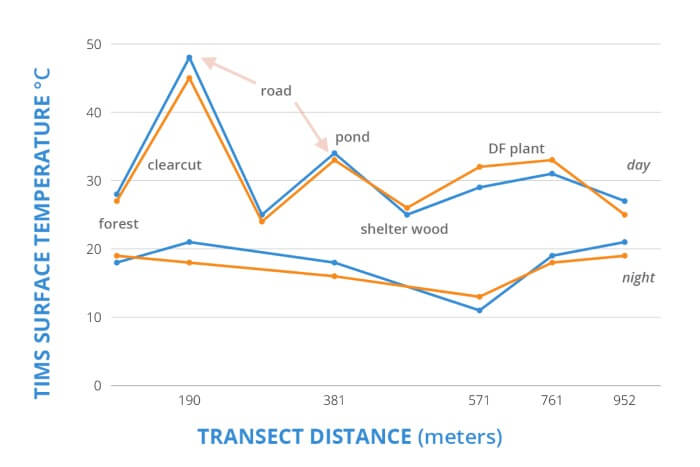
If developers plan the development of the rooftops carefully, the effects of surface temperature would be reduced, and there would be an impact on the radiation reaching inside the building. Temperatures in the buildings, especially on the upper floors, would also change. The changes would make the occupants more comfortable, but the variations could also cause respiratory or heat-related issues. There could also be an impact on refrigeration needs and air conditioning management. That means green roofs can reduce the greenhouse carbon emissions coming from the buildings.
Initially, most cities, including Toronto, were not densely populated. They had fewer residential properties, which left room for more vegetation growth. The lesser dense population also meant it was easier to find green vegetation within those cities. However, an increase in the housing density led to a reduction of green vegetation, especially when zoning restrictions were enforced in those regions. If the restrictions continue, the possibility of urban forestry may continue to reduce by two-thirds and even become impossible. Therefore, it is safe to say that the increasing urbanization needs alternative measures to improve vegetation growth in cities. The residential and commercial rooftops, through green roof techniques, are a perfect place to start.

Both the urban environment and the individual buildings can benefit greatly from green roof movement. The extreme weather fluctuations and climatic changes experienced in such areas would cease. The longevity of the roofs would increase, and the energy consumption would decrease drastically as the green roof covers improve insulation and help in the regulation of the buildings’ temperatures. Carbon emissions would also decrease. Another advantage would be the provision of gardening and horticulture space in the rooftops.
What is The Process of Modelling UHI?
Typically, the area affected by Urban Heat Island can exceed the city in question by two or three sizes horizontally. Other atmospheric processes and the UHI also tend to cancel out each other. For instance, the wind blowing over mountains can easily cause urban heat from various cities to combine, especially the neighbouring ones. The process of modelling UHI is, therefore, a way of resolving mesoscale circulations to get more information about green roof techniques and how they can influence UHI.
The Mesoscale Comprehensible Community Model, also known as MC2, is a model for getting the numerical mechanics in cities with green roofs. The models only use Navier-Stokes equations and use a semi-lagrangian scheme to do so. They also use the Soil Vegetation Atmosphere Transfer or SVAT scheme when getting the parameters of the natural surrounding within those cities.
Researchers always use two methods with the mesoscale model to determine the urban land use influx. In the first method, the natural terrain represents the use of urban land, where the elevation of buildings is measured by adjusting the roughness length. The second method is more detailed and involves the addition of more parameters to define the land usage flux. It also finds the drag in the air caused by the presence of buildings, kinetic energy, and trapped heat or solar radiation. The details also create an opportunity for computation of heat budget for parking lots, roads, walls, and roofs. The second model also relies on short and long fluxes when getting cloudiness, reflection, and shadow parameters. They have an indirect connection to the representations of the spaces between the buildings or street canyons. The figure below shows the parameters that affect the atmosphere.
The mesoscale models can be used with bare land or roof buildings depending on how densely populated a city is. The measurements are taken after every one kilometre and the average value is placed in a cell that represents them. The averages are fluxes from the road, rooftops, walls, and parking. The cells representing them are usually placed at the lower section of the UHI model. The figures on cells representing roofs on buildings with equal levels are obtained using the mean temperatures on rooftops and roads.
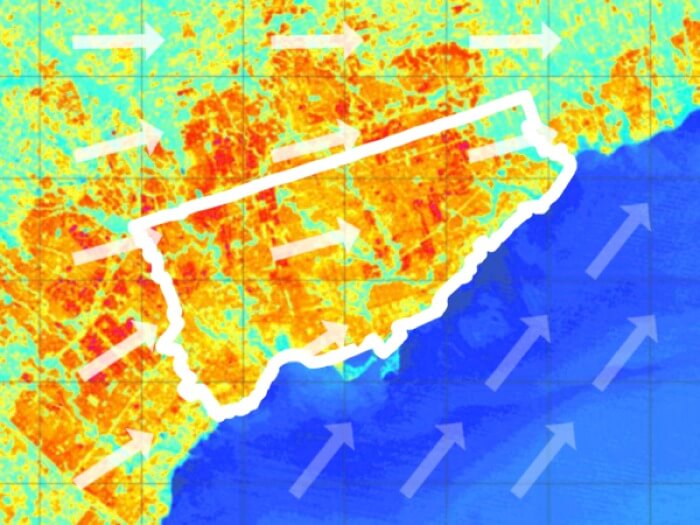
Getting the temperatures of green roofs with the models is a little challenging because they only get representations of natural spaces. Therefore, the effects of buildings with green roofs will not be shown correctly.
In the experiment above, the mesoscale model did not account for the green roof part. It only focused on the reference roof. That means using the model means considering only half the roof as green. Another crucial component to be considered in the simulation is the building height. The model takes care of this by allowing incorporations of various building heights through varying canyon heights. Researchers must use data from dependable sources when estimating the building height to avoid getting inaccurate results.
Data on land use for a particular city can be found in local data sets and survey maps. The data indicates the percentage of green roofs, natural greenery, buildings, concrete, and asphalt in every square kilometre to allow cells’ representations of computations. In most cases, the method assumes that the road and roof have equal shares in each cell. Green roof shares are assumed to be 5% of all the land and are distributed evenly. The model also shows that there is reduced land usage towards the borders of the cities. Extreme caution is still mandatory when computing land usage to prevent uncertainties that could cause confusion.
Based on all the information, it is safe to say that the mesoscale model has many limitations when it comes to representing the features of any city. Despite having such a drawback, the model works well for the rural environment and can solve circulation patterns that influence daily weather conditions. Studies were done to show the presence of similar temperature variations above and at the urban canyon levels. Nevertheless, generalizing such findings is not scientific. However, it still shows enough evidence supporting such temperatures below the boundary layer and above the surface.
The mesoscale model also uses a three-nested domain. It consists of 151 x 151 grids that represent 635 square kilometres. The grids represent internal geographical features where each one is equivalent to 25 Sq. Km. For instance, if a nested grid presents Great Lake, it will have an inner domain representing the section of a city with a resolution of 1 sq. km. Having large cells would require more time to compute because of their complex nature. Therefore, the smaller grids are used as a compromise to save on CPU time. The number of grid cells used can be adjusted to still maintain precision without reducing the resolution. The lower five layers, which spread approximately 8000 m, use a vertical resolution of 10 m. The time scale can be 2 or 3 days, but the variable boundary conditions can be recorded every 6 hours. The inner boundary conditions can also be updated with the results from the larger domain.
Research simulating the urban heat island in Toronto in May, June, and August was similar to observations made from Pearson and Buttonville airports. The city and its surroundings experienced increased temperatures, thanks to a synoptic pattern. Results showed that most of the areas experience warmer temperatures, with the only exception being geographical locations such as lakes.
Since soil moisture can influence evapotranspiration, the simulation covered both irrigated and non-irrigated roofs. The approach gave a better understanding of the cooling effects that green roofs have on the surrounding areas. According to the results, the lower layer with green roofs had distinctively low temperatures, with the difference ranging between 1 and 1.5 degrees Celsius. Irrigated roofs also showed further reduction in temperatures, with the lower layer showing a decrease of up to 2 degrees Celsius. All these continue to support the fact that green roofs are better than conventional roofs, especially with regards to regulating temperatures.

Are Green Roofs Better Than Traditional Roofs?
Do green roofs really work? Yes. Green roofs are better at maximizing the use of water, soil, and vegetation, making them better than traditional roofs. The two main factors that aid in this are heat storage and transfer in relation to soil properties.
The ability of a material to store heat is known as its thermal mass. For example, green roofs have water and soil, both of which have high thermal mass. Based on that, these roofs can retain heat, which helps them regulate the buildings’ temperatures. Heat transfer from the roofs to the buildings happens through various methods. Heat transfers from the soil happen through conduction, evapotranspiration, convection, and radiation.
Soil aids in the conduction process. Since soil contains moisture, the water present in it transfers heat through convection. It is the process by which liquids convey heat from point 1 to point 2. As such, the temperature regulations on the roof depend on the flowing water and drainage system in the vegetation layer of the soil.
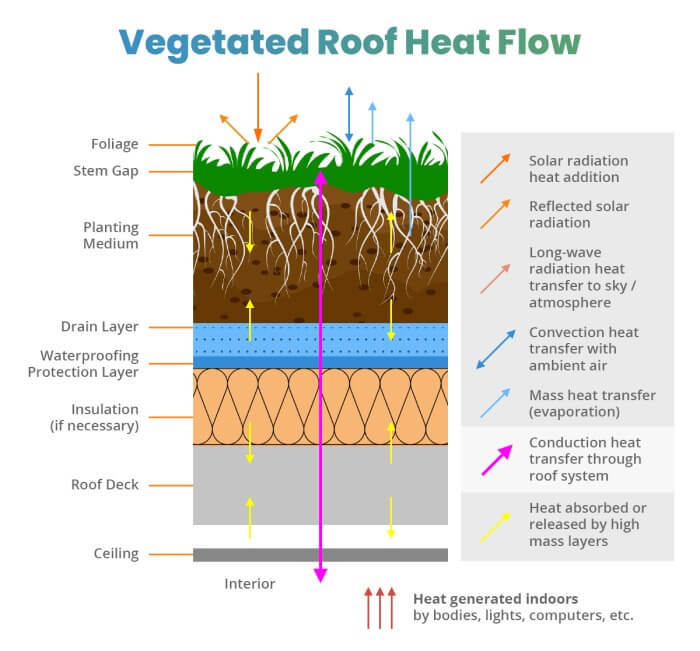
Blowing wind and thermal conduction also play a big role in regulating temperatures across green roofs for homes and commercial institutions. That is why elements with higher thermal mass have higher thermal conductivity. An example of such a material is soil. The feature makes soil great at conducting heat from a higher temperature source to a section with a lower temperature. Because the level of conductivity will determine the heat transfer rate, a material with great thermal conductivity like soil is ideal for controlling heat in and out of premises.
Evapotranspiration and radiation can also help to clarify what do green roofs do? Those two processes aid in heat flow and heat transfer from warmer to colder sections. Radiation is an electromagnetic process that allows the flow of heat from hot surfaces to cold materials. Many materials, especially those on the roofs, transfer heat through radiation. That means emitting the heat from the building into the atmosphere through long heatwaves. The evaporation process that takes place on the roof uses a different approach. First, it allows absorption of heat into the soil. Then the moisture in the soil converts to vapour and is released back into the atmosphere. The plants placed on green roofs also absorb water through their roots and release it into the atmosphere through evapotranspiration, which brings a cooling effect to the building.
So, why are green roofs so good? They allow the use of soil on buildings, which is crucial for governing heat flow on the roofs, buildings, and the immediate surroundings. The benefits of green roofs have been proven through several studies and experiences in cities adapting their installation.
Thermal Performance of Soil
The ability of soil to facilitate thermal transfer has already been proven above. In addition, soil facilitates the planting of vegetation on green roofs. The components found within soil, such as air, water, and solid particles, make it a porous element. Therefore, the extent of heat transfer will depend on several factors, such as the size of the particles, the density of the soil, moisture content, temperature, and mineral composition present. Several types of research have been done regarding the effectiveness of soil in temperature regulation. Some of the findings include:
- The mediums found in soil, which are minerals and water, are great at transferring heat and are much better than elements found in the air.
- Heat transfer in dry soil happens via point of contact. Wet soil is a better thermal conductor than dry oil because moisture increases the surface areas of the particles. That ends up increasing the point of contact, which increases the thermal conductivity.
- The thermal conductivity in the soil does not remain constant indefinitely. It decreases after the threshold value, which means an increase in moisture content will not automatically add to its thermal conductivity rate.
- Heat takes the path of minimal resistance when moving through the soil, not necessarily the shortest path. That means it will take the route with the best thermal conductivity.
- Soil’s thermal conductivity is never constant. It is influenced by soil composition and other geological conditions.
Green Roof Soil – Requirements and Specifications
Thermal conductivity rates show the differences between soil on natural ground and the soil on green roofs. Therefore, specifying the requirements for the type of soil to be used on green roofs is mandatory. The main components that must be available in such soil include compost, sand, and inorganic aggregates. That is according to research findings.
Inorganic aggregates are light materials that ensure the soil on the rooftops does not exert too much pressure on the building. They must be lightweight to avoid adding to the already existing weight from the existing soil. The inorganic aggregates should be able to hold more water. An example is expanded shale, which possesses the ability to hold water and is not heavy.
When choosing the correct soil for a green roof, two crucial elements to prioritize are less mass and a high water retention capacity. That is why peat soil is usually one of the best choices. It contains the required organic matter and is not too heavy.
An efficient drainage system is also essential because it enhances water flow during a heavy downpour or storm. The green roof soil can have a higher drainage capacity, but it will still retain enough water to control thermal flow.
Thermal Resistance of Green Roof Soil
The thermal resistance of soil largely depends on the moisture content because it influences thermal conductivity. For example, thermal conductivity in dry soil is 0.18 W/ mK, while that of moist soil with a moisture content of 82% is 0.41 W/mK. According to additional studies, green roof soils with a moisture content of 17% and 33% have a thermal conductivity of 0.26 and 0.30 W/mK, respectively. That shows that the thermal conductivity in the soil increases with the increase in moisture levels.
Based on the results of previous research, the best soil for green roofs is one that has 75% of shale, 10% compost, and 15% sand. A soil sample containing those components in those proportions was tested and proven to be the best. It is lightweight, can drain, and retains enough water for optimal thermal conductivity. The table below shows the soil sample suitable for green roofs, with varying moisture content and thermal resistance.
| Water Content (%) | 0 | 17 | 33 | 82 |
| Thermal Resistance (W/mK) | 0.18 | 0.26 | 0.30 | 0.41 |
Table 1. Thermal property of DH08 soil sample suited for green roofs systems depending on moisture content.
Difference Between White, Black And Green Roofs
Black roofs have a lower reflective ability and can add to urban heat. That is according to the results of research, which also showed they increase runoff capacity. Green and white roofs have better reflection capabilities and are gaining more popularity. However, you should still compare the three and their performance levels based on thermal and seasonal changes. The content below compares the three roof types. It focuses on their performance in comparison to the surface temperatures. Special instruments were installed on the roofs to measure and collect data on solar radiation, humidity, speed of wind and direction, and temperature.
How Green Roofs Are Different From Other Roofing Systems in Regards of Temperature
The differences between green roofs and the other types were determined with the help of a radiometer and a mini weather station that measures several other parameters like humidity and wind direction.
The comparisons of the temperatures of the different roof membranes are indicated in the figure below. The temperature used was constant. Therefore, for the green roofs, the focus was on the temperature below the vegetation and for the black and white roof types.
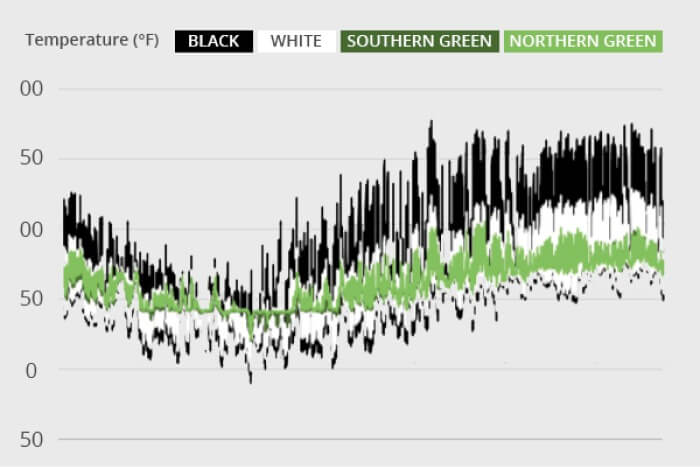
The peak surface temperature for the black roof was indicated as 80 degrees Celsius, while that of the white roof was lower by an average of 17 degrees Celsius. The peak temperature for the green roof was lower than that of the black one by 33 °C. The results were recorded during the day.
At night, the peak surface temperature for the black and white roof was lower than the air temperature. That difference was because of radiation and convection resulting from the surface colours. On the other hand, the green roof showed a lower difference because of the vegetation. Researchers also observed that lack of latent heat also contributed to the unavailability of water on the black and white surfaces.
In winter, the temperature changes on the black roof reached -20 °C, but that of green roofs remained above freezing point. The thick layer provided by the vegetation guarantees good insulation and is one of the well-known green roofs benefits. These results showed that the black roof undergoes extreme temperature changes as the surface membranes expand. That is why it recorded the highest and lowest temperature changes in summer and winter, respectively.
Green roof advantages are also seen in their ability to perform better, especially in winter and summer when extreme weather conditions. Their performance is twice or thrice better than the other roofs’.
Energy Benefits You Can Expect With Installation of Green Roofs
Before replacing your roof, you must find out the energy advantages of the one you intend to install, regardless of whether it is a green or white roof. Below we compare the energy advantages of green, white, and black roofs by focusing on heat flux. Typically, the heat flux depends on the gradient of the roof and not the amount of heat flow into and out of the building. As such, accuracy is only achievable by comparing the temperature gradient below and above the green, black, and white roof types. It is also the only way to achieve efficiency in the process.
Convection and radiation in green roofs caused them to report the lowest heat flux loss, whereas the black roof reported the highest. The comparisons were made per unit area, with the green roof losing 5 W/m2 heat in winter and the white roof losing 6.10 W/m2. Black roofs lost a little more heat, but further investigations showed that, on average, the black and white options lost the same amount of heat in winter. In summer, the white roof was cooler than the black one. The low performance by the white roof type in winter is known as the winter heat penalty and can be explained better using emissivity value.
The emissivity value (emissivity coefficient) is the measure of the level of efficiency of a material to emit heat radiation. The coefficient ranges from 0 to 1, with 1 representing the perfect emission. Organic matters have a value ranging between 0.90 to 1, making them good emitters of heatwaves. In comparison, metals have an emissivity value of 0.1 to 0.3. That is why they make good cooking wares. Based on this, black roofs should have a higher emissivity than white roofs. However, on the contrary, white roofing options have a higher value of 0.90 to 0.95. That is according to the reports by their manufacturers. It is the reason the roofs lose heat in winter. Radiometer readings showed the emissivity ranged between 0.45 and 0.50 for the black roof type and 0.90 for the white roof.
Looking into the energy savings by the three roofs can also show whether green roofs are beneficial or worth installing. The comparison can be made by converting heat losses and gains depending on how much power is used for air conditioning.
For the experiment, a 1000 square meter area was considered for the various types of roofs. The costs of air conditioning in winter and summer were assessed. Researchers assumed the buildings used natural gas for heating during winter. They also assumed the energy used for cooling was an electric air conditioning component. Below is a table showing the cost estimates for the black, green, and white roofs in summer and winter. In winter, the building with a black roof needed 21800.89 KWh of power. This translated into natural gas worth $940.47. The green roof required 13838 kWh, which is equivalent to fuel worth $599.22. In summer, the black roofing used energy worth $267.77 for cooling, the white roof used $72.40, and the green roof consumed $42.20 worth of fuel. That shows that green roofs reduce the need for heating and cooling more than the other roof types in both winter and summer.
The table below also shows the summation of the annual heating charges in a 1000 sq. meter building. The heating costs were $2901.32, $2002.61, and $2547.78 for the black, green and white roofs, respectively. According to the table, the yearly cooling costs were $38.08 for the green roof, $95.01 for the white roof, and $294.21 for the black roof. Therefore, the ability of green roofs to help property owners save money on the energy used for air conditioning in buildings cannot be refuted.




Can You Have a Green Roof In Canada And What Are Green Roof Benefits You Can Expect?
Green roof benefits are increasingly becoming harder to ignore in various regions. So, why are green roofs good? The roofing alternative is becoming more popular in many parts of the world, including Toronto, due to its many advantages, including its ability to provide clean air, lower energy consumption, manage rainwater, and improve the aesthetic appeal of a place. However, green roof technology is not as advanced as conventional roofs. As a result, researchers and developers are still exploring various ways of improving the performance of these roofs in varying climatic conditions.
Research studies have helped in the improvement of the thermal performance of green roofs. The studies that have explored the performance levels under various climatic conditions have proven that green roofs reduce the cooling and heating costs because of their thermal efficiency. Both simulations and experiments have produced similar results. They indicate that the two types of green roofs can reduce heat radiation by 8.2% and lower the need for cooling by 75%. It shows that the unconventional roofs can save a lot of money that would, otherwise, be spent on traditional fuel sources. Some simulation studies have shown that any city can become 2 degrees Celsius cooler if green roofs are installed in half of the buildings, with proper irrigation being done. The same city would be 0.5 °C cooler if half of its infrastructure is covered in dry green roofs.
The inhabitants of those cities can enjoy numerous green roof advantages such as:
- Retention of stormwater, which ensures the city drainage systems do not overflow after a heavy downpour.
- Decrease the amount of heat absorbed by the roof. The green roof types achieve this by reducing the surface area being exposed to the sun.
- Life extension of the roof because the vegetation on green roofs acts like a protective layer.
- Reduction of energy consumption in the buildings, which lowers the cost of air conditioning. The vegetation provides an insulating layer to improve energy efficiency.
- Better aesthetic appeal. Green roofs are better than conventional black or white roofs in many ways. For example, if the intensive green roof is installed, it can provide a recreational area like a park.
- Improved air quality because of the planted trees and vegetation.
Researchers have analyzed heat flow through varying roof configurations. The results show that all the layers found in green roofs and the growing medium play a vital role in the regulation of temperature and moisture of the buildings. The studies also showed that green roofs have better thermal qualities than traditional roofs. You must consider the growing medium and other composition properties for the vegetation to thrive on such roofs.
The thermal performance of the two types of green roof systems also depends on the size of soil particles, density, water content, and temperature. The soil has inorganic aggregates, compost, and sand as the main components. The inorganic compounds are naturally lightweight and do not add any weight or pressure to the roof. The soil and greenery also reduce heat loss through radiation and convection, which can be as high as 37%. The analysis also showed that the green roof lost 5 W/m2 of heat per unit area in winter, which is low compared to 6.3 W/m2 and 6.10 W/m2 on black and white roof types.
The different types of roofs also need proper planning to prevent Urban Heat Island and help to manage radiation into the building. Without proper installation and careful considerations, the top floors of the buildings would have uncomfortable temperature variations. Research studies also show that green roof styles are the most effective solution to temperature variations and UHI reduction. Urban Heat Island can cause a lot of discomforts and, in some cases, respiratory illnesses. The area affected by UHI can spread to up to three times the size of the city, but its impact is felt most horizontally. UHI and other atmospheric features can interact and create a more modified effect. The greenhouse effect can reduce and control Urban Heat Island because the installation of green roofs lowers the temperature around and in buildings.
So, do green roofs really work? Yes. The research concluded that incorporating green roof techniques on city roofs is one of the best ways to improve the cities’ overall quality of life. It can also reduce the negative impacts of natural weather elements. Developers and other stakeholders should choose the most suitable properties for the installation of such roofs. The sites should be picked according to their availability, installation cost, and intended function.
How do green roofs work? They require occasional maintenance depending on the type of plants grown and the soil density. Such measures will improve the already long lifespan of green roofs. Precision during installation, especially when dealing with the multiple layers of green roof, is required. If done correctly, green roofs can last between 30 and 50 years.
